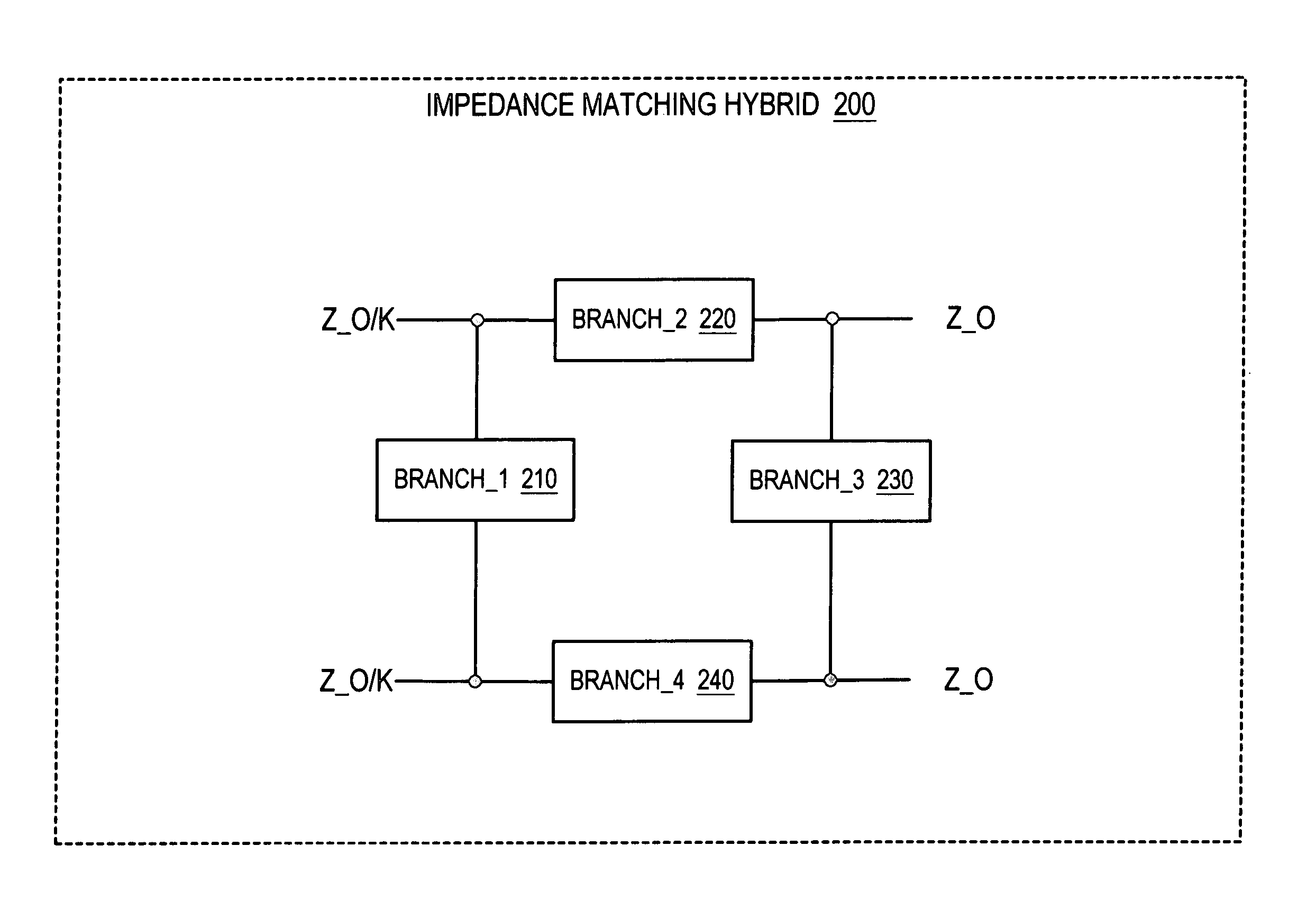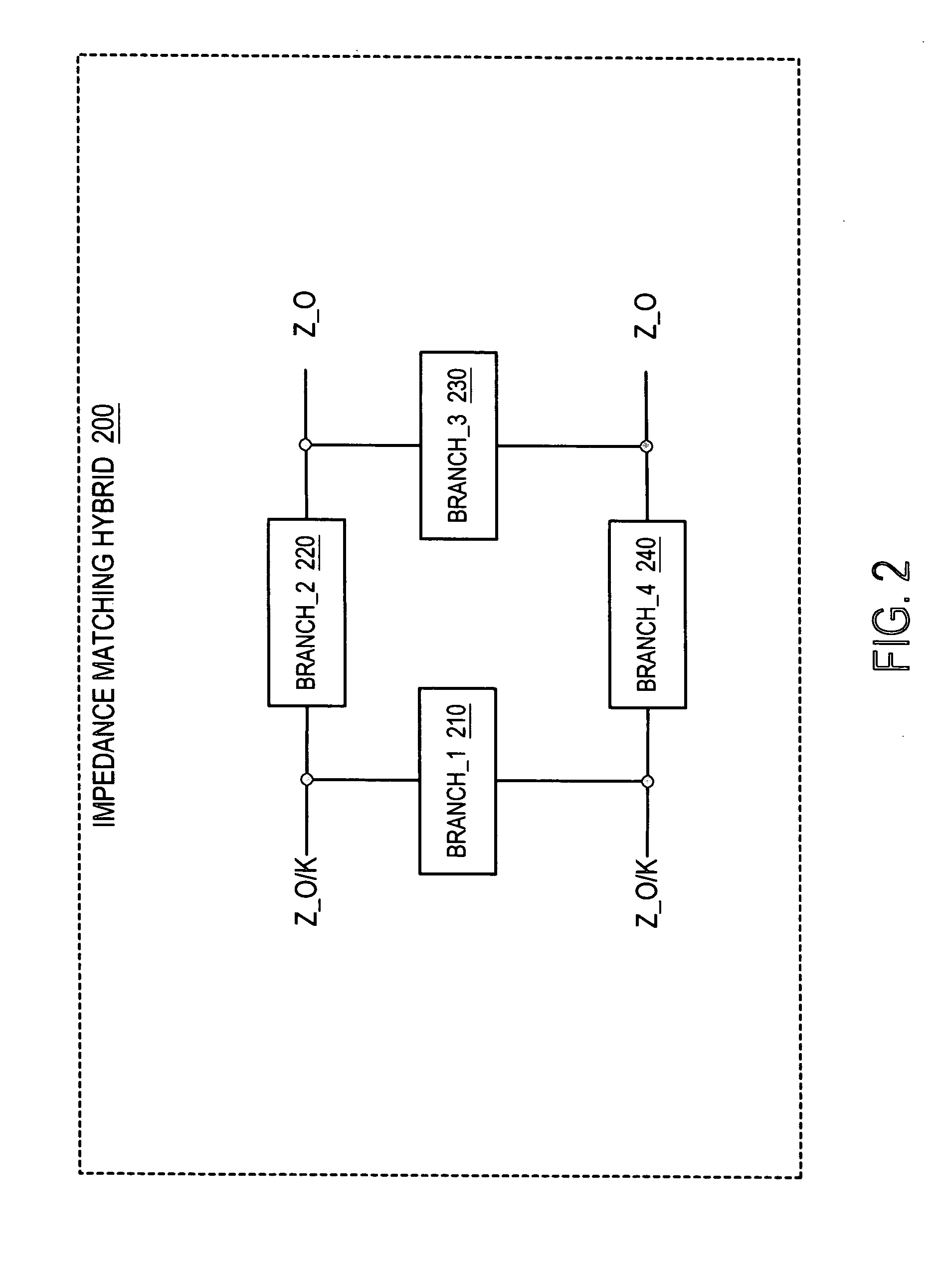Power amplifier utilizing quadrature hybrid for power dividing, combining and impedance matching
a power amplifier and hybrid technology, applied in the direction of amplifiers, amplifier input/output impedence modifications, amplifiers, etc., can solve the problems of adversely affecting or degrading difficult load conditions to control, adversely affecting the performance of the amplifier, etc., to reduce the amount of area needed
- Summary
- Abstract
- Description
- Claims
- Application Information
AI Technical Summary
Benefits of technology
Problems solved by technology
Method used
Image
Examples
Embodiment Construction
[0016] A balanced power amplifier is described. In the following description, for the purposes of explanation, numerous specific details are set forth in order to provide a thorough understanding of the present invention. It will be apparent, however, to one skilled in the art that the present invention may be practiced without these specific details. In other instances, well-known structures and devices are shown in block diagram form in order to avoid unnecessarily obscuring the present invention.
[0017] Power Amplifier 100 Architecture
[0018]FIG. 1 illustrates a block diagram of a balanced power amplifier according to one embodiment of the invention. The power amplifier 100 includes an input for receiving an input signal 104 (e.g., an RF signal, RF_in) and provides a drive signal 105 (e.g., a drive current) to a load (R_L) 160, which can be, for example, an antenna (e.g., a 50 ohm antenna).
[0019] The balanced power amplifier 100 includes a power splitter 120 (also referred to as...
PUM
 Login to View More
Login to View More Abstract
Description
Claims
Application Information
 Login to View More
Login to View More - R&D
- Intellectual Property
- Life Sciences
- Materials
- Tech Scout
- Unparalleled Data Quality
- Higher Quality Content
- 60% Fewer Hallucinations
Browse by: Latest US Patents, China's latest patents, Technical Efficacy Thesaurus, Application Domain, Technology Topic, Popular Technical Reports.
© 2025 PatSnap. All rights reserved.Legal|Privacy policy|Modern Slavery Act Transparency Statement|Sitemap|About US| Contact US: help@patsnap.com



